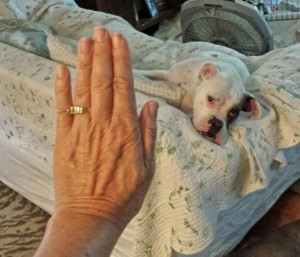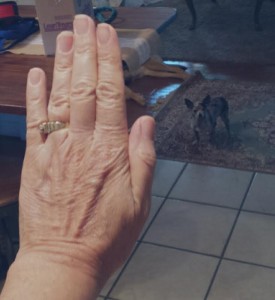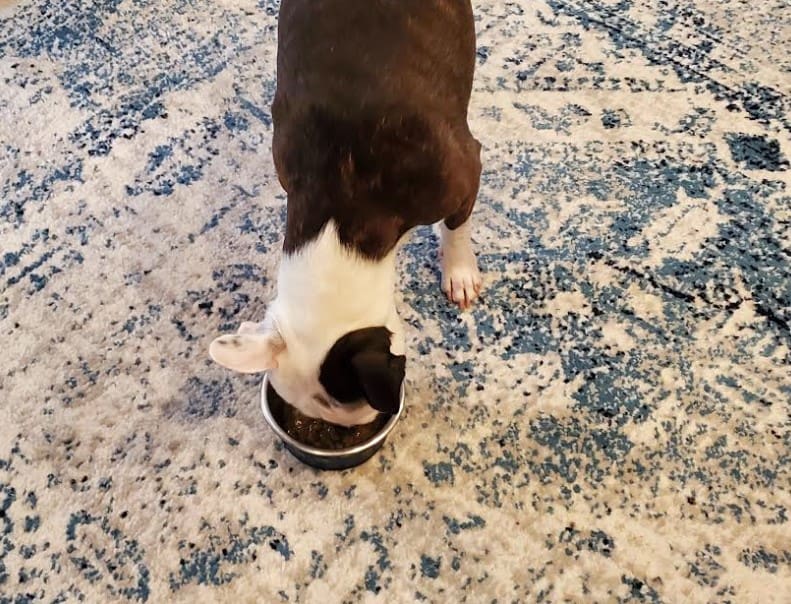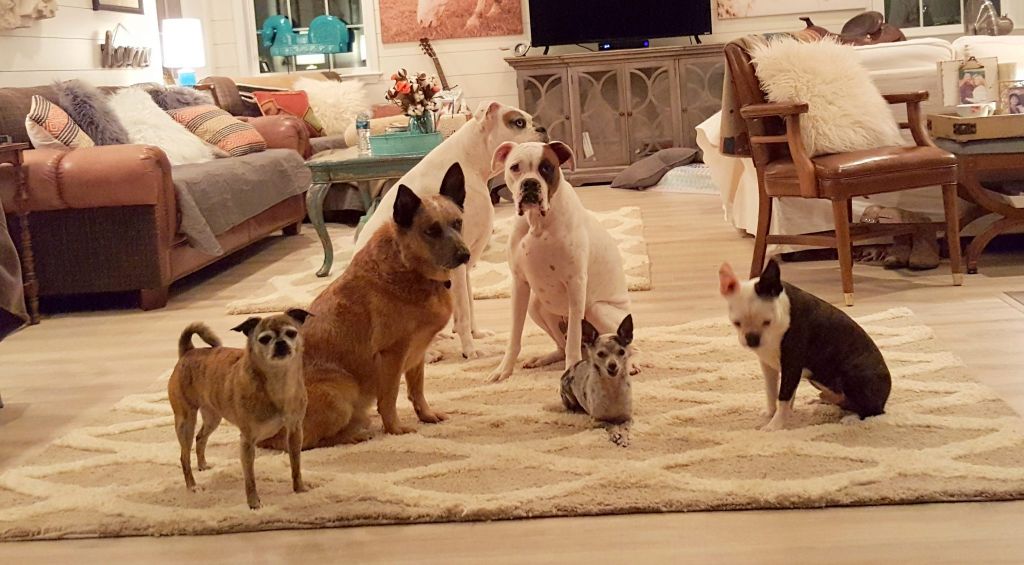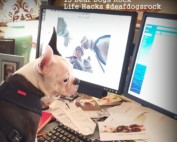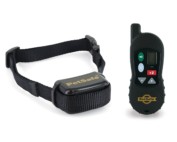Why is it so important to teach your deaf and hearing dogs the “wait” sign cue? Because a dog knowing the “wait” sign can keep your dog from dashing out the door, jumping out of the car when you least expect it, running in front of a car and getting hit, and worse yet getting killed. Basically the “wait” sign cue can literally save your dog’s life. Another great use of the “wait” sign is being able to take fun photos of your deaf dogs.
Above photo: My four deaf dogs and two hearing senior dogs in a “sit and wait” when I sign to all of them.
I now make all six of my hearing and deaf dogs “sit and wait” before I put their food dish down. This is how you begin training for the “wait” sign cue. If I lean forward to put the dish down and they lunge forward before the dish hits the ground, then I stand back up with the bowl in my hand. I give them the “wait” sign again which is what a police officer uses when standing in a cross walk to stop traffic. I put my palm of my hand facing the dog which means a “wait” sign. I will also give a “sit” sign before the “wait” sign. Since I do the “sit” and “wait” cue at every single meal they are all very good at “wait” now. This is all done in conjunction with Nothing In Life Is Free training.
If you do “sit and wait” at every meal time, you will be amazed at how good your dogs will become at the wait cue. The key is using consistent positive reinforcement training at every meal or every opportunity you get.
It is important to note that the dog does not get to come out of the sit and wait cue until after the food dish has been put down on the floor and the dog looks up to you for an “okay” or some kind of release sign like “all done” or a “thumb up” sign to let your dog know he did the right thing (as in good dog) and it is okay for the dog to eat.
Bowie must “sit and wait” to get his meal at all meal times. We also practice “sit and wait” to go outside and to come inside.
If the dog continues to get up out of the sit just as your setting the bowl on the floor, stand back up with the bowl in your hand and start over. Continue to repeat this until the dog’s rump stays in the sit and set the bowl down and then give a release sign (it can be okay, thumbs up or all done sign to let the dog know it is okay to eat).
As you can see from this photo Bowie is still sitting even though his food bowl is on the ground until he sees my release sign of a good with a thumbs up sign.
Bowie gets his reward of a yummy meal when he is patient and does his “sit and wait” sign cue.
There is a huge upside to the “wait” sign if you have people or children always going in and out of the house or when you are taking pictures of your dogs to share on Instagram or Facebook. I make my deaf and hearing dogs strike a pose with a dog treat, sign the cue for “sit” and then “wait” and they all freeze. This sign cue can save your deaf and hearing dogs life one day. If one of my dogs tries to bolt out the door and I put my “wait” sign up they freeze. Even long distance (think of your dog loose in traffic and you need him not to cross the street into traffic).
My dogs are so good at the wait sign I can open the front screen porch door and let the little dogs out on the porch and put my hand up for the wait sign and the big dogs freeze.
Also if you love taking photos of your dogs the “wait” sign cue is your most important resource when taking photos!
Photo above: Using the “wait” sign on all of my dogs…see how they FREEZE?
Happy training! ~ Christina Lee – Deaf Dogs Rock
To see Savannah’s post ‘Teaching The Cue Wait in ASL’ please click here.


